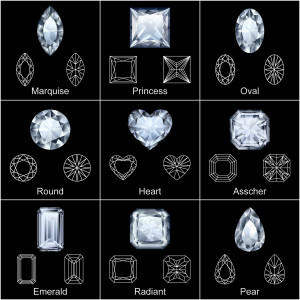Buying an Engagement Ring in you Bathrobe?

Point and click! Thinking about buying your diamond engagement ring online, think again. While the internet may provide beneficial information and helpful tips for the novice it is definitely not the route to go if you’re choosing an engagement ring, a large investment which will in the long term not only be of great financial value but sentimental value as well.
Let’s first debunk a few myths about online shopping:
With so many choices I can compare for the best value. Not necessarily true. While it may appear that the internet can offer endless choices and will allow you to compare, it is nearly impossible to compare the true value of your diamond ring. Diamonds are a naturally occurring formation, they all differ in quality and have can have varying degrees of imperfection. With online shopping many times there will be one image supplied, of one diamond and ultimately it won’t be the one you’ll be receiving in the mail weeks later. There is no sure way to know exactly what you will be getting until you get it.
It’s so convenient! Is it really? Although online shopping does provide the freedom of browsing in your bathrobe it can, in the long run, be less convenient than finding a ring in-store. The major issue is maintenance. An engagement ring is a large investment, and as such will necessitate upkeep: ring sizing, diamond cleaning, tightening. When you build a relationship with a store those services can be provided for.
You can always find a deal. Not so sure. The internet marketplace is a sellers’ market. As a consumer we’re left to dig, claw and tear through verbiage. While the vendor provides a few facts and lovely descriptions it’s still a gamble. They may say “ideal” but do they mean “ideal-cut,” they may refer to a diamond’s brilliance but do they mean that in terms of the light’s actual refraction or does it just sound great? If you’re not a professional and can’t assess a diamond based upon internal qualities you may end up making a huge, and very expensive, mistake.
No pushy salesman. Is that really a good thing? Any reputable jewelry store will have a staff knowledgeable enough to help guide you in making your purchase. While it can be a little overwhelming, and they are focused on selling a ring they can also provide a wealth of knowledge. As long as you go in with a sure price point and some basic information they can provide the great service of comparing rings within your range and explain the difference which could have eluded you otherwise.
One of the major drawbacks is not being able to actually see your future engagement ring. Although a lot of the value of your diamond center is ascribed by details too small to be seen by the naked eye, there are other qualities that need to be compared in person. Which one offers the most sparkle, which setting suits your hand, which ring takes your breath away? It’s impossible through a screen, there’s absolutely no comparison to seeing the ring and making that connection in person.
Put in the leg work, make a visit, this is the ring with which you’re promising your life to another. Make it the right one.
For more on online engagement ring shopping: The Plunge


